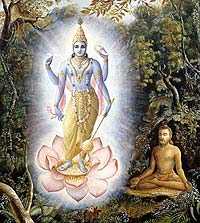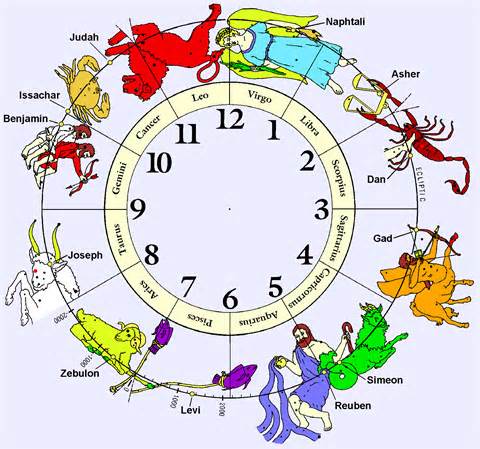
Yoga
much more than a fitness regime
This article, by Rob Tillett, astrologer, wizard and founder of Astrology on
the Web, examines Yoga, one of the great "spiritual exports" that
have come
from East to West in recent times. There is much more to Yoga than just a
system of physical exercises, because Yoga is a complete philosophy of life,
as well as a technique (or rather a series of techniques) for
self-realisation, mental, emotional, physical and spiritual wellbeing. Yoga
means "union", the union of the individual consciousness with the
essential
spirit. Although this article is not strictly astrological, it is relevant
to our discourse in the sense that astrology can be seen to have a deep
basis in nature.
New Page 7




https://ajiio.in/woslXgV https://fktr.in/S9sKHZT
https://topdeal.app.link/1a2dI9ZybGb
https://bitli.in/kfojutp
New Page 4

One of the great "spiritual exports" that have come from East to
West in
recent times is Yoga. Almost everyone has heard of it and many Westerners
have taken it up with enthusiasm, believing it to be little more than a
healthy system of exercise, like Pilates. Yoga, however, is much more than
this, for it is a time-honoured set of physical, mental, emotional and
spiritual disciplines, designed to bring the human spirit to a state of
liberation (moksha), or self-realisation. Yoga is one of the six orthodox
systems of Indian Philosophy, but it is much more than a philosophy.
What is Yoga?
Yoga is a sanscrit word, meaning "yoking" or "union".
The "union" is a
melding of the individual consciousness, purusha, with Ishvara, the
spiritual principle-while the "yoking" is the holding back of the
material
world of the senses, enabling a revelation of the inner essence. Yoga
principles were systematised by Patanjali at a relatively late date, but
there is evidence for the greatest antiquity of the teaching. There is some
indication in the Upanishads of the development of relevant material;
Zimmer, a leading Western authority, believes that Yoga predated the Aryan
invasion of India, and that it was first developed by the original
inhabitants of the area, then adopted and claimed by the new regime.1
Yoga is often viewed as a practical method of applying the more intellectual
Sankhya philosophy, but there is a primary difference between the two
schools that distinguishes them into distinct, though related systems of
thought.2 Sankhya argues for the independent, atheistic existence of eternal
spiritual monads (purusha) and eternal modes of material nature (prakriti).
Yoga basically agrees with the Sankhyan analysis, but develops the notion of
an ultimate unitary awareness, Ishvara, with which the struggling soul may
eventually unite by transcending the material worlds of name and form (nama
and rupa).
Yoga in a Real World
Unlike Vedanta, the main stream of current Indian philosophy, both of these
philosophical systems maintain that the material world has a real existence,
composed of the interaction of the three gunas, or modes of material
existence.3 Nature is thought to be eternal, though cyclical in its
manifestation. Astrology, the science of inbuilt natural patterns, is the
map to this material world.
Prakriti is held to be quite separate from purusha. For the yogi, Nature
exists purely for the purpose of awakening self-consciousness in the monad.
This philosophical realism presents some well-known problems, but, yoga
being principally a practical system, their resolution is generally deemed
to be a function of the liberated state-moksha, the goal of all yogic
action.
Yogic thought may be divided into several main branches, or fields of
activity.
[NOTE: these are outlined here, but for a more extensive examination
with
an Indian flavour, see our new sister site, TruthStar.com, especially Types
of Yoga in our main Yoga section - ed.]
Hatha yoga, familiar to Westerners as the popular system of health-giving
exercises, is primarily concerned with the physical organism, its laws and
the methods governing its conscious development. It is usually undertaken as
one of the first moves towards knowledge of the higher self, because
uncontrolled bodily processes are viewed as obstacles to its optimum
unfoldment. Postures (asanas), exercises, mantra meditation and breath
control are also connected with the tantric awakening of the chakra system,
the arousal of Kundalini (Shakti or divine energy). Hatha yoga is not
generally seen by initiated yogis as an end in itself, but as a preparatory
discipline for more spiritual pursuits, though dedicated practitioners hold
that Hatha is a complete pathway and contains its own ends (the attainment
of yoga, or union of the individual consciousness with the divine).
Karma (or Kriya) Yoga, the path of works recommended by Krishna in the
Bhagavad Gita, is a method of disciplining the mind and body to virtuous
action within the everyday world of society. Karma is the chain of moral
cause and effect, whereby every action, be it thought, word, or deed, is the
both the product and initiator of a grand series of consequential events in
the life path of the monad, the purusha. The karma yogi lives in accordance
with what he perceives to be ethical action; his goal is to become an agent
of unobstructed spiritual will, while maintaining an outwardly normal
personality.
Raja yoga, the "royal" path, is concerned with the mind, its
control,
development and eventual transcendence. It is the construction of will-power
through techniques of meditation and mind-control. Raja yoga develops inner
senses and can bring remarkable powers (siddhis) of the higher mind.
Gnani (or Jnana) yoga, essentially presents a more philosophical approach to
the problems of life. Its exponents recommend the profound study of
fundamental principles, revealing the underlying truths of existence. Gnani
yoga is primarily concerned with scientific and intellectual questions-the
riddle of the universe-and in itself is more of a theoretical stratum than a
field of practice, so is usually combined with specific yogic techniques.
Bhakti yoga, the last great field of yogic development, is the method of the
devotee who wishes to attain union with universal spirit by loving immersion
in the bliss of divine awareness. The Bhakti yogi seeks fulfilment through
love and worship.
There are other "yogas", but all fit under one or more of these
great
umbrellas. For example, Mantra yoga (the process of spiritual development by
recitation of formulŠ), is a technique that may fall under Hatha, Karma,
Gnani, Raja or Bhakti yoga, depending on the approach of the teacher, or
guru. The mantra-a formula of spiritually charged syllables that has been
prescribed by an empowered teacher-may be used as a method of controlling
the attention of the aspirant's lower mind, allowing his higher, intuitional
faculties to be revealed, or as a method of concentrating the attention of
the student on the personality of his particular deity, destroying the
karmas of material existence through its power. Mantra-shastra (mantra
scripture) is a key element of Tantra, the other side of Yoga, which has
also experienced a resurgence in the West in recent years.
[This article continues in part two to outline the spiritual purposes of
yoga, devotion and salvation Yogis believe that the inner self is like a
spark thrown from the divine fire of eternal spirit.]
Article Source - http://www.astrologycom.com

